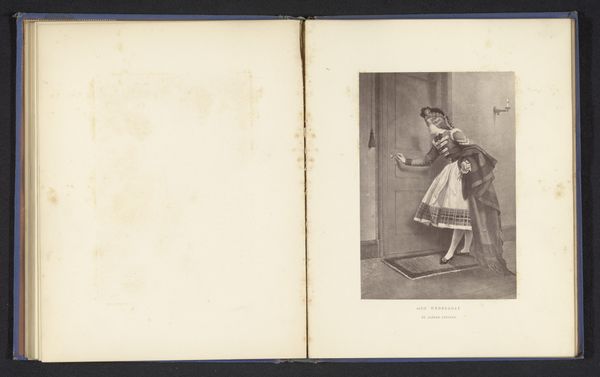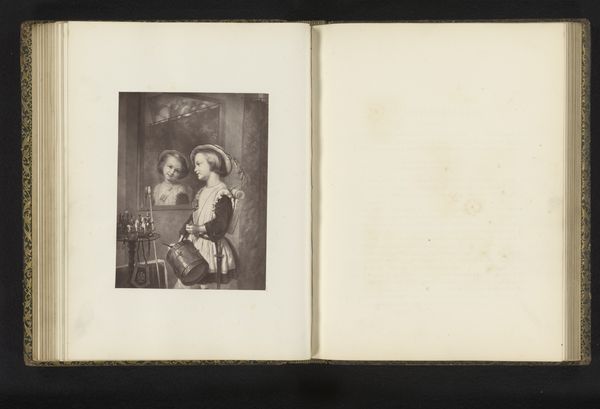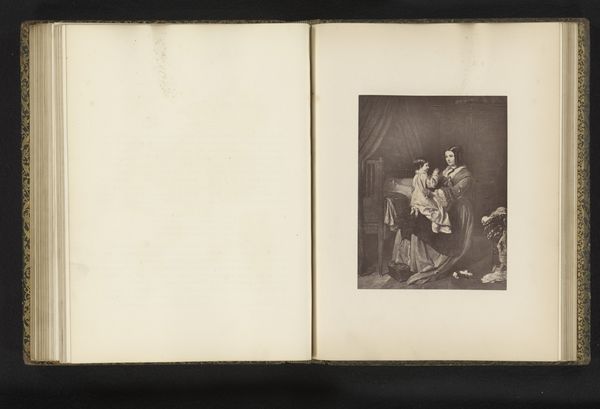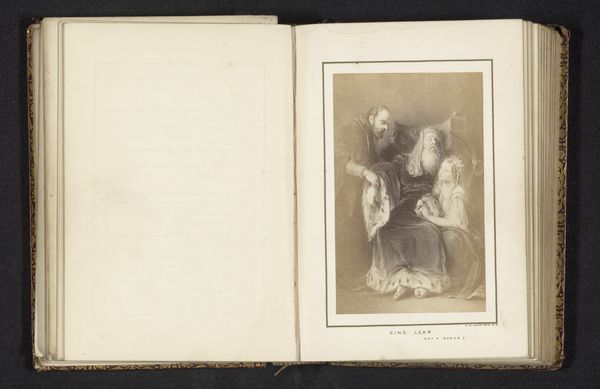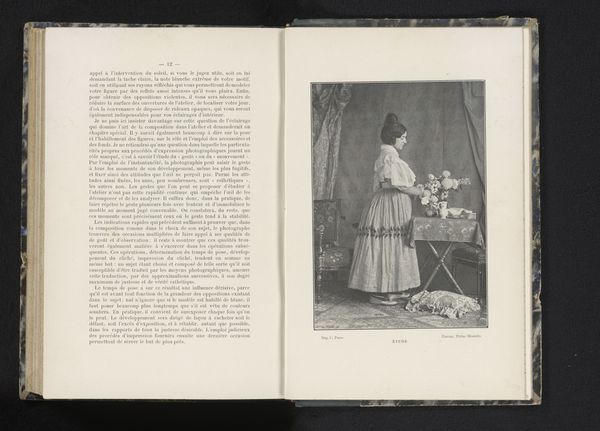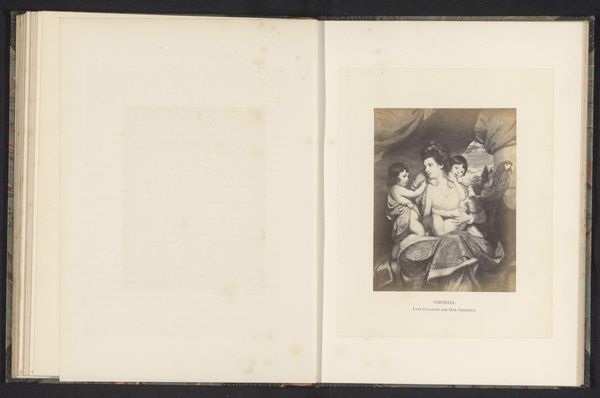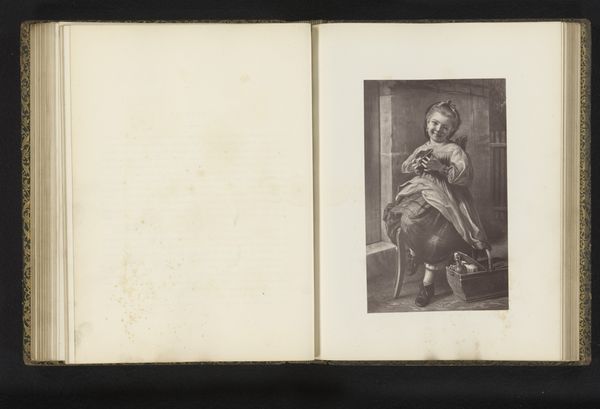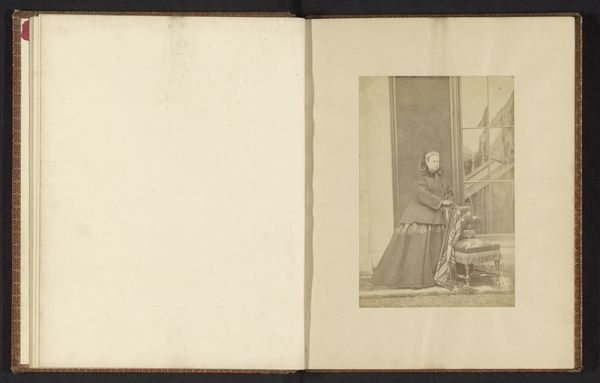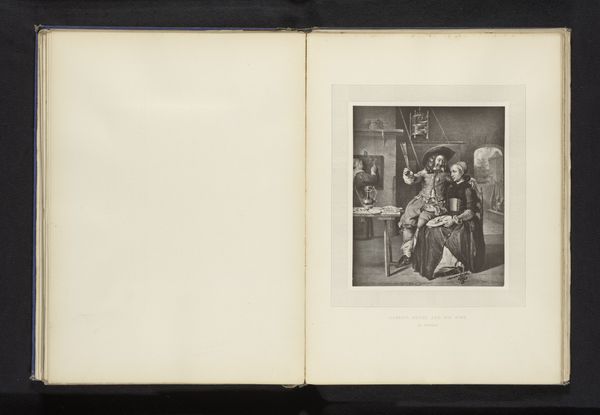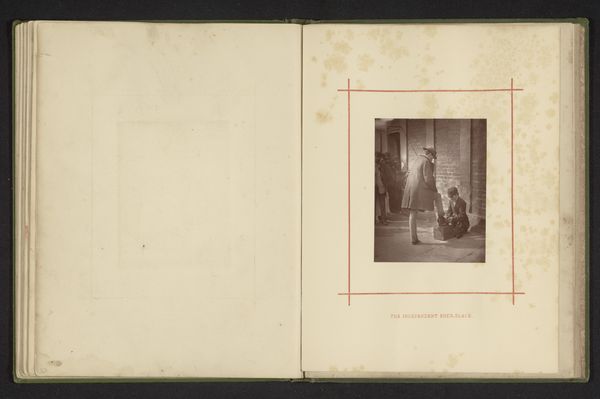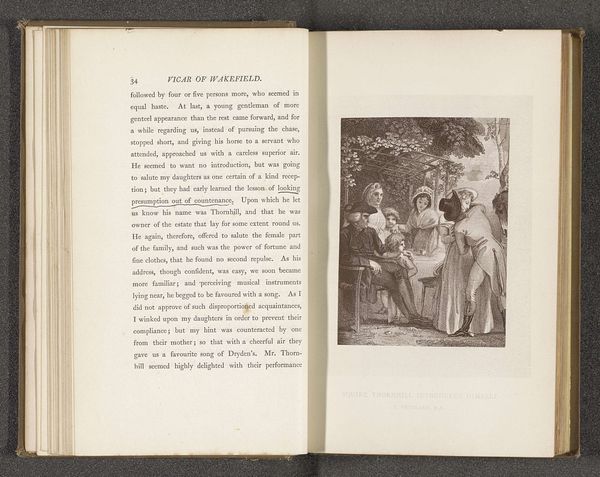
Fotoreproductie van een prent naar een schilderij van een vrouw voor een deur door Alfred Stevens before 1874
0:00
0:00
print, photography
#
portrait
# print
#
photography
#
genre-painting
#
academic-art
#
realism
Dimensions: height 158 mm, width 119 mm
Copyright: Rijks Museum: Open Domain
Editor: Here we have a photographic reproduction of a print after a painting by Alfred Stevens, dating from before 1874. It depicts a woman knocking on a door, and it feels like a snapshot of everyday life from another era. What strikes you about this image? Curator: I see a commentary on the distribution of art. The reproduction flattens Stevens' original, but it democratizes access. This image speaks to the industrialization of art viewing and the accessibility – or inaccessibility – for different classes. Consider the labour involved in creating and then reproducing it. Who could afford the original, and who consumed the reproduced image? Editor: That's a fascinating point. I was so focused on the woman depicted, I didn't think about the layers of reproduction. Curator: The very act of reproducing it mechanically transforms the meaning. Is it simply a transfer, or does the technology reshape how we perceive and value the artwork? Think about the wood, ink, paper, the very materials that carry the image. How do those limit or even amplify Stevens' original message? Editor: It definitely highlights how reliant we are on the means of production to access art. What was once exclusive becomes more widely available, but potentially losing its perceived value in the process. Curator: Exactly! The rise of reproductive technologies – photography, printing – forced a re-evaluation of artistic skill. What happens to painting when anyone can create a seemingly accurate copy? It shifts artistic focus. We have to remember that art does not exist in a vacuum, but always embedded within specific social and material conditions. Editor: I never thought of it that way, but I understand how changes in materiality reflect changes in the broader culture. Thanks, that really gave me a new perspective.
Comments
No comments
Be the first to comment and join the conversation on the ultimate creative platform.
